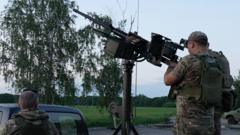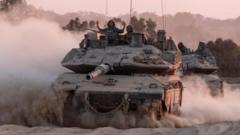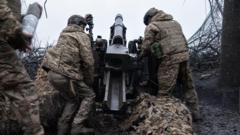European countries have pledged to nearly double military investments, with expectations for enhanced capabilities and innovation amid security threats. However, a reliance on U.S. defense technologies raises questions about true independence and future competitiveness.
Europe's Military Investment: A Strategic Shift or Stagnation?

Europe's Military Investment: A Strategic Shift or Stagnation?
As European nations prepare to significantly increase defense spending, the challenge remains: can they develop competitive military industries?
European nations have committed to doubling their military expenditures over the next decade, potentially amounting to 14 trillion euros, or $16 trillion. This strategic shift aims to bolster local defense industries but faces the challenging reality of U.S. technological dominance. Key American products, such as the F-35 fighter jets and Patriot missile systems, are benchmarks for Europe, creating a dilemma: should European defense efforts focus on developing indigenous military technologies or continue purchasing from established American firms?
While increased funding signals a proactive stance in response to evolving threats, especially from Russia, the immediate question is whether Europe can pivot effectively amidst a landscape dominated by U.S. innovation. Countries have already laid substantial investments in American technologies, leading to concerns about compatibility and the pace of building a robust European defense ecosystem.
The conflict in Ukraine has underscored the urgency for European nations to rethink their defense strategies. A strong military industry could foster innovation that aligns with Europe’s specific security needs. However, achieving this ambition requires time, resources, and an integrated approach to research and development across EU member states. The continued purchase of American arms suggests a cautious balance, as nations weigh immediate security needs against the long-term goal of independence in defense capabilities.
In conclusion, while the financial commitment towards expanding military industries is notable, whether it translates into tangible advancements in European defense will depend on strategic choices made in the coming years.




















